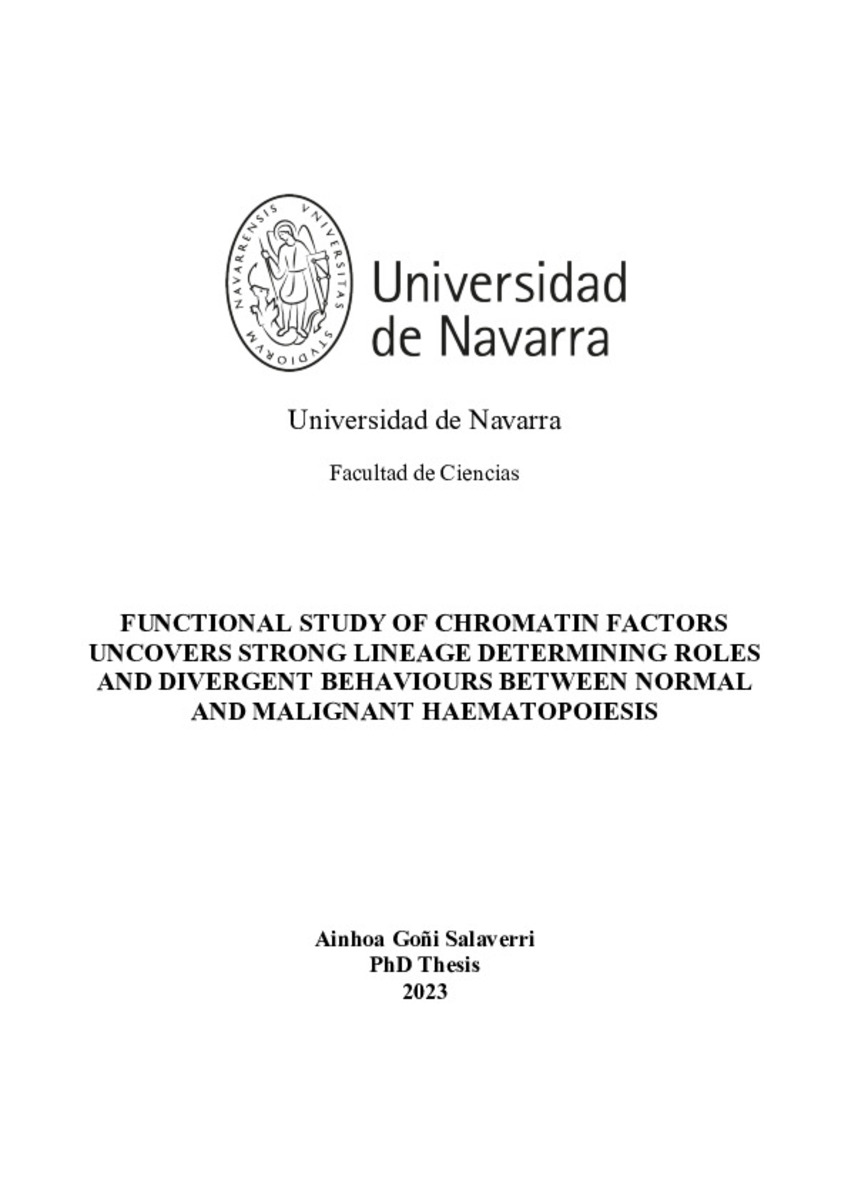Functional study of chromatin factors uncovers strong lineage determining roles and divergent behaviours between normal and malignant haematopoiesis
Keywords:
Materias Investigacion::Ciencias de la vida::Genética
Genome regulatory mechanisms
Haematopoiesis
Malignant haematopoiesis
Publisher:
Universidad de Navarra
Citation:
GOÑI, Ainhoa. "Functional study of chromatin factors uncovers strong lineage determining roles and divergent behaviours between normal and malignant haematopoiesis". Pineda, A. y Lara, D. (dirs.). Tesis doctoral. Universidad de Navarra, Pamplona, 2023.
Statistics and impact
0 citas en

0 citas en

Items in Dadun are protected by copyright, with all rights reserved, unless otherwise indicated.







